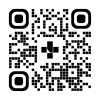Hearing Aids
How to care for your child’s hearing aid and earmold
Your child’s hearing equipment, like their hearing aid and earmold, needs regular checking and maintenance.
Follow the steps below to make sure your child’s hearing equipment is working properly. Once your child is able, the goal is for them to do these tasks themselves.
Each hearing aid is different. Talk with your audiologist and refer to the hearing aid’s manual for specific information.
Daily care for hearing aids and earmolds
- Wipe the hearing aid and earmold with a soft tissue or cloth when they are removed from the ear to remove wax, dirt, and debris.
- Check the ear canal part of the earmold to make sure it is free of wax. If you see wax, wipe it with a damp cloth, or gently remove the wax with a wax loop, brush, pipe cleaner, or wax tool.
- Check that the earmold tubing is free of moisture. If you see moisture, detach the earmold from the hearing aid and use an earmold blower to dry it.
- Look closely to check if the earmold and tubing have any cracks, holes, or tears that could lead to feedback (whistling or squealing). A torn earmold or tube will need to be replaced by an audiologist.
- Make sure the earmold tubing is firmly attached to the earmold and the hearing aid.
- Check the microphones on the hearing aid. Clean them as needed using a dry brush.
- Turn the hearing aid off when it is not in use.
- Check that the hearing aid is turned on and working before putting it in your child’s ear.
- Charge or change the battery as directed by the hearing aid manual and your child’s audiologist.
Listening check
A listening check needs to be done every day before the hearing aid is placed in your child’s ear, and anytime you think that your child isn’t hearing and listening like they usually do.
Learn how to do a daily listening check and how to troubleshoot if the listening check finds a problem.
Taking care of hearing aids when they are not in your child’s ears
Like any electronic device, a hearing aid can be affected by extreme temperatures and moisture. Extreme cold or hot temperatures can cause battery and electronic problems, cracking, or melting of the hearing aid’s plastic casing.
When your child is not using their hearing equipment, store it in a safe, dry spot.
Batteries
Batteries are poisonous. Keep batteries out of reach of young children and pets.
If you think that your child has swallowed a battery, take them to an emergency department right away.
If you think that your pet has swallowed a battery, go to an animal emergency hospital.
To see this information online and learn more, visit https://MyHealth.Alberta.ca/health/aftercareinformation/pages/conditions.aspx?hwid=custom.ab_hearing_aid_care_child_inst

For 24/7 nurse advice and general health information call Health Link at 811.
Current as of: May 16, 2023
Author: Provincial Audiology Professional Practice, Alberta Health Services
This material is not a substitute for the advice of a qualified health professional. This material is intended for general information only and is provided on an "as is", "where is" basis. Although reasonable efforts were made to confirm the accuracy of the information, Alberta Health Services does not make any representation or warranty, express, implied or statutory, as to the accuracy, reliability, completeness, applicability or fitness for a particular purpose of such information. Alberta Health Services expressly disclaims all liability for the use of these materials, and for any claims, actions, demands or suits arising from such use.
